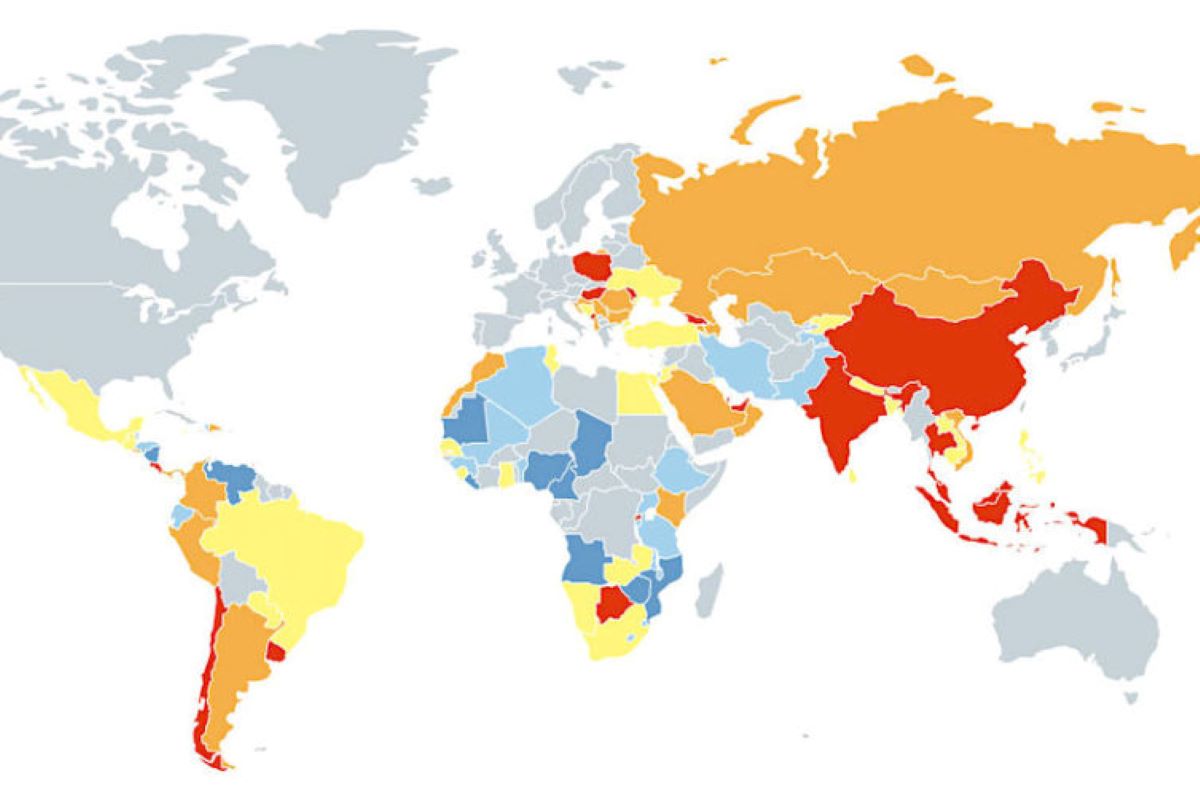Dropping out of emerging markets


When I make trades in my investment portfolios, I like to keep you informed. Not that you should do what I do. I mean, what I do in my portfolio or portfolios of clients may not represent your objectives. But you can use it as a guideline for what you are trying to accomplish.
On Friday, October 8, 2021, I sold our position in the Innovator exchange-traded fund (ETF) MSCI Emerging Markets Power Buffer (symbol: EJAN). EJAN is a hedged investment that tracks the performance of Emerging Market stocks (EM). We also sold various non-hedged EM positions, which, aggregately, were of lesser size than EJAN. EJAN represented about a 3 percent position in my portfolios with a risk profile ranging from “moderate” to “aggressive.”
Given that stock markets have mostly gone nowhere for months, I think I got my money’s worth on having a hedged position. According to comments from Dr. Scott Gottlieb (former Food and Drug Administration commission and board member of Pfizer), we’re mostly past the peak of the COVID-19 Delta wave in the U.S. That makes me more comfortable increasing my direct equity exposure.
You may be wondering why I didn’t drop the hedge and then outright buy more EM. Initially, I wanted Emerging Markets exposure for a couple of reasons, including diversification. Sometimes I feel as if too much of my equity allocation is devoted to U.S. equity. We investors often have a location bias, so we don’t always remember that the U.S. is a relatively small part of the global economy. In 2020, the United States accounted for 15.9 percent of global gross domestic product (GDP).
It’s pretty crazy that this year I’ve been nearly entirely in domestic equities. But I was. And after selling EJAN, I’m even more so. It feels weird. How weird? Well, according to The Vanguard Group, “to get full diversification benefits, we suggest that you consider investing about 40 percent of your stock allocation in international stocks.” I’m well below that recommended allocation. But alternatively, U.S. stocks have done well this year relative to the rest of the world. At the time of this writing, year-to-date, the S&P 500 has tripled the return of the Vanguard FTSE All-World ex-US index (basically, the rest of the world). I can’t say that it’s been prudent of me to be so light on international stocks this year, but I also can’t be too mad about it.
Of the international stocks, Emerging Market stocks specifically performed well at the beginning of the year. Wrongly, I figured that hot inflation would further propel EM. Historically, EM has been well-correlated to commodity prices. For example, during the rise to record oil prices in 2007-2009, EM and oil were tied at the hip. Then they sold off together as prices collapsed. And then the correlation continued. But in recent months, the prices have moved inversely at times. To some extent, that makes sense. EM indices have become more diversified throughout the last half-decade. But there’s more to it than that. I underestimated how much COVID-19 would continue to inhibit the non-developed world.
In retrospect, I should have outright bought commodities. At the time of this writing, the iShares S&P GSCI Commodity Index has more than doubled the returns of the S&P 500. I dropped the ball and diversified to Emerging Markets stocks, which typically rise when commodities’ prices increase. I tried to play inflation and commodities through a correlated investment. I was drawn to the allure of actual companies having real earnings. Profits make me feel safer, and the prices of commodities tend to be highly volatile. For the last few months, commodities prices have been volatile — to the upside.
I mean, I won’t lose too much sleep over it. How much would a reasonable person invest in commodities? A typical investor would rarely, if ever, buy commodities outright. A reasonable speculator (almost an oxymoronic term) might double the Energy and Materials sector allocation of the S&P 500, which is just over 5 percent. I am more “reasonable” than “speculative,” so I probably would have been a bit under that 5 percent allocation. I missed out on some double-the-market gains for a mere 5 percent of my growth-oriented portfolios. However, if I’m intellectually honest about it, I’m marginalizing the allocation amount with the use of the word “mere.” Sure, the math isn’t much. But the blow to the ego is massive. If I want to continue my introspection, one might wonder why I’m hyper-focused on missing out on commodities. I could be thinking about the bigger picture – I was fortunate enough to have avoided Vanguard’s recommended 40% allocation of international stocks. (Not that I am picking on Vanguard. Just the opposite. I cite them because they’re authorities.) But that’s probably a conversation for my therapist and me.
I live in a world of woulda, coulda, shoulda. I’m used to that. But I consider it a loss that I anticipated the commodity wave, took the wimpy way out and missed the opportunity. C’est la vie.
I am going to continue being wimpy. I opted to place the proceeds of EJAN into large-cap U.S. equity, as opposed to switching to commodities. I’ve invested in commodities before – and I will again. But I missed the run-up in commodities, and I don’t want to chase them at these levels. The U.S. stock market, on the other hand, has been following its usual script. The S&P 500 has declined 5 percent from its September 2, 2021, all-time high to exhibit weakness in September 2021 and volatility in October 2021. Seasonally, the stock market is often more robust during the winter months. The stock market has been squeezed recently. It may get pinched some more before the first snowfall here in the Berkshires. However, I get the sense that at least half of the compression is behind us.
Allen Harris is the owner of Berkshire Money Management in Dalton, Mass., managing investments of more than $700 million. Unless specifically identified as original research or data-gathering, some or all of the data cited is attributable to third-party sources. Unless stated otherwise, any mention of specific securities or investments is for illustrative purposes only. Adviser’s clients may or may not hold the securities discussed in their portfolios. Adviser makes no representations that any of the securities discussed have been or will be profitable. Full disclosures. Direct inquiries: [email protected].
This article originally appeared in The Berkshire Edge on October 18, 2021.
Allen is the CEO and Chief Investment Officer at Berkshire Money Management and the author of Don’t Run Out of Money in Retirement: How to Increase Income, Reduce Taxes, and Keep More of What is Yours. Over the years, he has helped hundreds of families achieve their “why” in good times and bad.
As a Certified Exit Planning Advisor, Certified Value Builder, Certified Value Growth Advisor, and Certified Business Valuation Specialist, Allen guides business owners through the process of growing and selling or transferring their established companies. Allen writes about business strategy in the Berkshire Eagle and at 10001hours.com.







